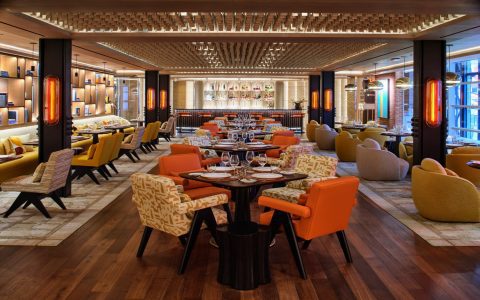Louis Vuitton Scaffolding Design Style
The term "scaffolding design style" typically refers to the aesthetic applied to temporary installations or store renovations for Louis Vuitton, notably featuring its iconic patterns like the Monogram Canvas. Key aspects include:
Core Principles
- Brand DNA Integrity: Scaffolding consistently integrates LV's heritage symbols, primarily the Monogram motif, ensuring immediate recognition even during construction phases.
- Travel Philosophy: Reflects the brand's 150-year foundation in "travel philosophy," emphasizing adventure and discovery, often through suggestive forms reminiscent of luggage trunks or global journeys.
- Modernity Meets Legacy: Projects a forward-thinking image while respecting LV's history. The juxtaposition of industrial scaffolding with luxury motifs signifies transformation.
Implementation Strategies
- Architectural Collaboration: LV frequently commissions renowned architects (e.g., Frank Gehry, Jun Aoki, Peter Marino) for flagship stores. Their signature architectural concepts influence the temporary structure design. Scaffolding isn't generic but site-specific.
- Canvas Application: The Monogram pattern or Damier grids are digitally printed onto high-quality, durable wraps covering scaffolding frames, transforming mundane construction into premium brand art.
- Theatrical Teasing: Scaffolding acts as a "reveal curtain," building anticipation for the final architectural reveal, aligning with LV's focus on experience.
Strategic Impact
- Uninterrupted Branding: Maintains brand presence and narrative during disruptive renovation periods.
- Exclusive Experience: Turns construction into an exclusive, visually engaging event, reinforcing LV's position as an innovator beyond products.
- Cultural Connection: Embodies LV's commitment to blending heritage, art, and contemporary design, resonating with culturally aware audiences.







